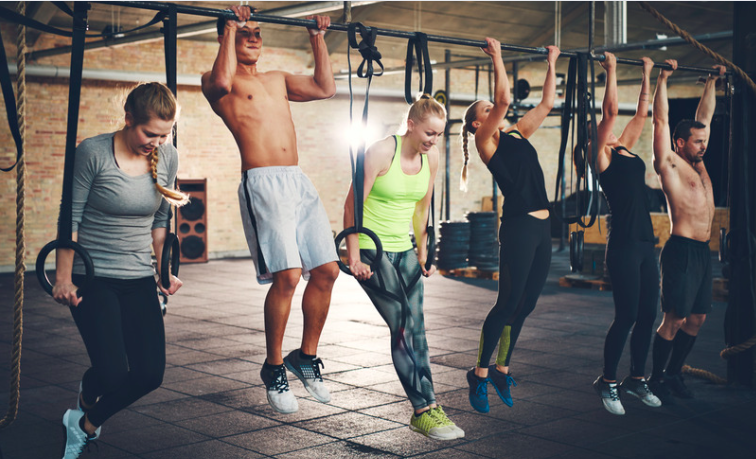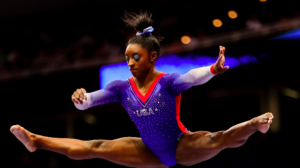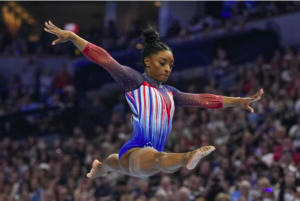Athletes
Unleashing Your Inner Beast: A Comprehensive Guide to Training Techniques for Athletes

Unleashing Your Inner Beast: A Comprehensive Guide to Training Techniques for Athletes
The roar of the crowd, the sting of competition, the relentless pursuit of peak performance – the life of an athlete is a thrilling, demanding journey. Whether you’re a seasoned competitor or just starting your athletic adventure, having a solid foundation of training techniques is crucial for success.
This comprehensive guide delves into the world of training techniques for athletes, equipping you with the knowledge and tools to optimize your workouts, enhance your performance, and reach your full potential.
The Building Blocks: Essential Training Principles
Before diving into specific techniques, let’s establish a strong foundation with some core training principles:
- Specificity: Tailor your training to the specific demands of your sport. A marathoner wouldn’t train the same way as a weightlifter. Identify the key physical qualities (strength, speed, endurance, etc.) needed for your sport and design your workouts accordingly.
- Progression: Gradually increase the intensity, duration, or frequency of your workouts over time to avoid plateaus and keep challenging your body. This can involve adding weight, increasing reps/sets, or shortening rest periods.
- Overload: To improve, your body needs to be stressed beyond its current capabilities. This doesn’t mean pushing yourself to the point of injury, but rather finding that sweet spot where you’re challenged but still recovering effectively.
- Recovery: Just as important as pushing yourself is allowing your body adequate time to repair and rebuild. Schedule rest days, incorporate active recovery techniques (like yoga or light cardio), and prioritize quality sleep.
- Variety: Don’t get stuck in a rut! Incorporating a variety of training techniques helps prevent boredom, reduces injury risk, and develops well-rounded athleticism.
By adhering to these principles, you’ll create a training program that’s both effective and sustainable, propelling you towards your athletic goals.
Strength & Power: Building the Foundation
Strength and power are the cornerstones of athletic performance. Here are some key training techniques to develop these crucial qualities:
- Weight Training: This is a fundamental tool for building muscle mass, strength, and power. Utilize compound exercises that work multiple muscle groups simultaneously (squats, deadlifts, bench press) alongside isolation exercises for targeted development.
- Plyometrics: Jump training exercises like box jumps, depth jumps, and jump squats improve explosive power, which translates to faster sprints, higher jumps, and improved agility.
- Olympic Lifts: The snatch and clean & jerk are highly technical lifts that require coaching and guidance, but they offer unparalleled benefits for developing explosive power and overall athleticism.
Remember, proper form is paramount when lifting weights. It’s better to use lighter weights with good technique than heavier weights with compromised form, which can lead to injury.
Speed Demons: Techniques for Velocity
Speed is a valuable asset for many athletes. Here are some training techniques to hone your sprinting skills:
- Sprint Mechanics: Focus on proper running form – powerful arm drive, high knees, strong leg extension – to maximize efficiency and minimize wasted energy.
- Acceleration Drills: Practice drills like flying starts, hill sprints, and resisted sprints (using a sled or parachute) to develop explosive acceleration.
- Speed Endurance: While pure speed is important, sustaining your speed over longer distances is crucial for many sports. Train with interval sprints, incorporating short bursts of high-intensity effort followed by recovery periods.
Don’t neglect proper recovery after speed workouts, as these sessions can be quite demanding on your body.
Endurance Engines: Fueling Long-Distance Performance
For athletes competing in endurance events, building a strong aerobic base is essential. Here are some key training techniques:
- Long, Slow Distance (LSD): Consistent, low-intensity runs (think conversational pace) build your aerobic base, allowing your body to utilize oxygen more efficiently.
- Tempo Runs: These sustained efforts at a comfortably hard pace (around lactate threshold) improve your ability to sustain a faster pace over longer distances.
- Interval Training: Alternating high-intensity bursts with recovery periods improves your VO2 max (the maximum amount of oxygen your body can utilize) and lactate threshold (the point at which fatigue sets in).
By incorporating these techniques, you’ll develop the stamina and endurance needed to conquer long-distance challenges.
Sharpened Knives: Agility and Coordination Drills
Agility and coordination are crucial for athletes in almost any sport. Here are some training techniques to enhance these aspects:
- Ladder Drills: Footwork drills using a agility ladder improve foot speed, agility, and change-of-direction ability. There are endless variations to keep things interesting and challenging.
- Cone Drills: Similar to ladder drills, cone drills incorporate quick changes of direction, incorporating turns, sprints, and backpedals.
- Plyometric Drills: Exercises like box jumps with lateral jumps or medicine ball throws with lunges combine explosive power with coordination.
- Sport-Specific Drills: Integrate drills that mimic movements specific to your sport. A basketball player might practice dribbling drills with change-of-direction shuffles, while a soccer player might incorporate footwork drills with ball control.
These drills will enhance your ability to move quickly and efficiently, giving you an edge over your competition.
Mental Muscle: Building Mental Toughness
The mind is just as important as the body in athletic performance. Here are some strategies to develop mental toughness:
- Visualization: Mentally rehearse successful performances, picturing yourself executing skills and overcoming challenges.
- Goal Setting: Set clear, achievable goals to stay motivated and track your progress. Break down long-term goals into smaller, more manageable steps.
- Positive Self-Talk: Challenge negative thoughts and replace them with positive affirmations. Believe in yourself and your ability to succeed.
- Meditation: Meditation practices can improve focus, reduce stress, and enhance emotional regulation, all beneficial qualities for athletes.
By prioritizing mental well-being alongside physical training, you’ll be better equipped to handle pressure, stay focused, and bounce back from setbacks.
Fueling the Machine: Nutrition for Athletes
Nutrition plays a critical role in athletic performance. Here are some key considerations:
- Balanced Diet: Consume a balanced diet rich in fruits, vegetables, whole grains, and lean protein to provide your body with the essential nutrients it needs to perform and recover.
- Hydration: Stay adequately hydrated throughout the day. Water is your best bet, but electrolyte-rich beverages can be helpful during intense workouts.
- Pre-Workout Meal: Fuel your body with a balanced meal rich in complex carbohydrates and protein 1-2 hours before training.
- Post-Workout Recovery: Replenish glycogen stores and jumpstart muscle repair with a meal containing carbohydrates and protein within 30 minutes after a workout.
By following these dietary principles, you’ll provide your body with the necessary fuel to perform at its best and recover effectively.
Beyond the Gym: Essential Recovery Techniques
Recovery is just as important as training. Here are some techniques to optimize your rest and recovery:
- Sleep: Aim for 7-8 hours of quality sleep each night. Sleep allows your body to repair muscle tissue, replenish energy stores, and consolidate learned skills.
- Active Recovery: Light activities like yoga, swimming, or walking can promote blood flow, reduce muscle soreness, and aid in recovery.
- Stretching: Regular stretching improves flexibility, reduces muscle tension, and can help prevent injuries.
- Massage Therapy: Sports massage can help relieve muscle soreness, improve circulation, and promote relaxation.
Prioritizing recovery will help you return to training feeling refreshed and ready to perform at your peak.
Frequently Asked Questions (FAQs)
To solidify your understanding of training techniques for athletes, here are some frequently asked questions:
How often should I train?
The frequency of your training will depend on your sport, experience level, and overall training program. It’s best to consult with a coach or qualified trainer to design a program that meets your individual needs. Generally, beginners might start with 2-3 workouts per week, while experienced athletes might train more frequently.
Is it okay to train with some muscle soreness?
Mild muscle soreness (DOMS) is a normal response to exercise. However, if you’re experiencing sharp pain or extreme fatigue, it’s best to take a rest day to allow your body to recover. Listen to your body and don’t push yourself to the point of injury.
How can I stay motivated to train?
Set realistic goals, track your progress, and find a workout buddy or training group for added accountability. There are also many fitness apps and online resources that can provide motivation and guidance.
Is it important to warm up before and cool down after workouts?
Absolutely! A proper warm-up prepares your body for exercise by increasing blood flow, loosening muscles, and improving mental focus. This can help prevent injuries and improve your performance. A cool-down allows your body to gradually return to its resting state, helping to reduce muscle soreness and promote recovery.
What if I don’t have access to a gym?
No gym? No problem! There are many effective training techniques you can do at home or outdoors using bodyweight exercises, resistance bands, or everyday objects. You can also find countless free workout routines online or in fitness apps that cater to bodyweight training or limited equipment.
By incorporating these training techniques, prioritizing recovery, and fueling your body properly, you’ll be well on your way to achieving your athletic goals. Remember, consistency and dedication are key. Embrace the journey, celebrate your progress, and unleash your inner athletic beast!

Athletes
What Is Simone Biles’ Net Worth?

What Is Simone Biles’ Net Worth?
Simone Biles, an iconic figure in gymnastics, has captivated the world with her extraordinary talent and achievements. As one of the most decorated gymnasts in history, Biles has amassed significant wealth through her sports career, endorsements, and other ventures. In this comprehensive article, we delve into the various aspects of her financial success, exploring her net worth, sources of income, and how she manages her wealth.
Simone Biles: A Brief Overview
Simone Biles was born on March 14, 1997, in Columbus, Ohio. From a young age, she displayed an exceptional aptitude for gymnastics, quickly rising through the ranks to become one of the most celebrated athletes in the sport. Her journey to the top has been marked by numerous records, accolades, and a profound impact on gymnastics worldwide.
Early Life and Introduction to Gymnastics
Simone Biles’ introduction to gymnastics began when she was just six years old during a daycare field trip. Her natural talent was immediately evident, and she was soon enrolled in a training program. Biles’ dedication and hard work paid off as she started winning competitions at a young age, setting the stage for her illustrious career.
Simone Biles’ Rise to Stardom

Simone Biles’ ascent in the world of gymnastics is nothing short of spectacular. Her breakthrough came in 2013 when she won her first all-around title at the World Championships. Since then, she has dominated the sport, winning multiple Olympic and World Championship medals.
Olympic Achievements
Biles’ performance at the 2016 Rio Olympics solidified her status as a gymnastics legend. She won four gold medals and one bronze, showcasing her unparalleled skills and earning global recognition. Her success continued at the 2020 Tokyo Olympics, where she added more medals to her collection, despite facing personal challenges.
World Championships Dominance
In addition to her Olympic triumphs, Biles has been a force to be reckoned with at the World Championships. She holds the record for the most World Championship medals won by any gymnast, male or female, with a total of 25 medals, including 19 golds.
Simone Biles’ Net Worth: An In-Depth Analysis
Simone Biles’ net worth is a reflection of her incredible success in gymnastics and her savvy business ventures. As of 2024, her estimated net worth is around $10 million. This impressive figure is the result of her earnings from competitions, endorsements, and other revenue streams.
Earnings from Competitions
Biles has earned substantial prize money from her victories in various competitions. Olympic medals come with monetary rewards, and Biles’ multiple gold medals have significantly contributed to her wealth. Additionally, World Championship titles also offer prize money, further bolstering her earnings.
Endorsements and Sponsorships
One of the major sources of Simone Biles’ income is her endorsement deals with major brands. Her marketability and global appeal have attracted sponsorships from companies such as Nike, Kellogg’s, Procter & Gamble, and Beats by Dre. These lucrative deals have played a crucial role in enhancing her financial portfolio.
Major Endorsement Deals
- Nike: Biles signed a multi-year deal with Nike, which includes a signature line of apparel and footwear.
- Kellogg’s: She has appeared on cereal boxes and in commercials for Kellogg’s products.
- Procter & Gamble: Biles has been featured in various campaigns for P&G brands, including Gillette and Secret.
- Beats by Dre: Her partnership with Beats by Dre has included promotional appearances and advertisements.
Business Ventures and Investments
In addition to her gymnastics career and endorsements, Biles has ventured into various business opportunities. She has invested in real estate and other enterprises, diversifying her income streams and ensuring long-term financial stability.
Real Estate Investments
Biles has made strategic investments in real estate, purchasing properties in prime locations. Her real estate portfolio includes luxury homes and rental properties, providing a steady income stream and potential for capital appreciation.
Managing Wealth and Financial Planning

Simone Biles has demonstrated prudent financial management, ensuring her wealth is preserved and grown over time. She works with financial advisors to make informed decisions about her investments and expenditures.
Charitable Contributions and Philanthropy
Despite her busy schedule, Biles is actively involved in charitable endeavors. She has supported various causes, including mental health awareness, children’s education, and disaster relief efforts. Her philanthropic activities not only make a positive impact but also reflect her commitment to giving back to the community.
Simone Biles’ Influence on Gymnastics
Simone Biles’ impact on gymnastics extends beyond her competitive achievements. She has inspired a new generation of gymnasts and brought greater visibility to the sport. Her influence is evident in the increased participation and interest in gymnastics globally.
Advocacy for Mental Health
Biles has been vocal about the importance of mental health, especially for athletes. Her decision to prioritize her mental well-being during the Tokyo Olympics sparked important conversations about mental health in sports. Her advocacy has helped reduce the stigma surrounding mental health issues and encouraged others to seek help when needed.
Future Prospects and Continued Success
As Simone Biles continues to compete and explore new opportunities, her net worth is likely to grow further. She remains focused on her gymnastics career while also pursuing other ventures that align with her interests and values.
Potential Ventures and Opportunities
Biles has expressed interest in various fields, including fashion, fitness, and media. Her diverse skill set and entrepreneurial spirit position her well for success in these areas. Potential future ventures could include launching her own clothing line, fitness programs, or even a media production company.
Conclusion
Simone Biles’ net worth is a testament to her extraordinary talent, hard work, and strategic financial decisions. Her journey from a young gymnast to a global icon is inspiring, and her influence extends far beyond the gymnastics arena. As she continues to excel in her career and explore new opportunities, her financial success is expected to reach even greater heights.
Frequently Asked Questions (FAQs)
How did Simone Biles start her gymnastics career?
Simone Biles began her gymnastics career at the age of six after a daycare field trip introduced her to the sport. She quickly demonstrated exceptional talent and was enrolled in a training program, leading to her rise as a top gymnast.
What are Simone Biles’ major endorsement deals?
Simone Biles has secured major endorsement deals with brands like Nike, Kellogg’s, Procter & Gamble, and Beats by Dre. These partnerships significantly contribute to her net worth.
How much is Simone Biles’ net worth in 2024?
As of 2024, Simone Biles’ estimated net worth is around $10 million. Her wealth comes from competition earnings, endorsements, and business ventures.
What philanthropic activities is Simone Biles involved in?
Simone Biles is actively involved in charitable endeavors, supporting causes such as mental health awareness, children’s education, and disaster relief efforts.
What future ventures might Simone Biles pursue?
Simone Biles has expressed interest in fashion, fitness, and media. Potential future ventures could include launching her own clothing line, fitness programs, or a media production company.
Athletes
Exclusive Peek into Simone Biles’ Journey

Exclusive Peek into Simone Biles’ Journey: Untold Stories of the Gymnastics GOAT’s Meteoric Rise
Simone Biles’ name resonates with greatness in the world of gymnastics. From her humble beginnings to shattering records on the Olympic stage, her extraordinary journey epitomizes resilience and unwavering determination. As the most decorated gymnast of all time, Biles has etched her name in history books, leaving an indelible mark on the sport.
But behind the glitz and glory lies an untold story – one of perseverance, mental fortitude, and an unyielding passion that propelled her to become a true icon. In this exclusive peek, we unravel the intimate details of Biles’ meteoric rise, from her early life to the pinnacles of Olympic excellence. Get ready to be inspired as we delve into the making of a legend, her multi-million dollar brand empire, and her quest for more greatness at the 2024 Paris Olympics.
Simone Biles: A Trailblazing Gymnastics Icon
Simone Biles, the gymnastics legend, has etched her name in history as one of the greatest gymnasts of all time. Her incredible journey from humble beginnings to Olympic glory is a testament to the power of determination and natural talent.
Born in Columbus, Ohio, Biles’ early life was marked by adversity. Yet, her unwavering spirit and extraordinary talent propelled her to new heights. She has redefined the boundaries of gymnastics, breaking numerous records along the way.
With an unparalleled level of skill and artistry, Biles has captivated audiences worldwide. Her athletic achievements have solidified her status as a trailblazing icon, inspiring generations of aspiring gymnasts to dream big.
💡 Key Takeaways: Simone Biles’ journey from humble beginnings to becoming a gymnastics legend is a testament to her extraordinary talent, resilience, and unwavering determination.
Early Life and Beginnings: From Humble Roots to Extraordinary Talent
Simone Biles’ legacy was forged amidst the challenges of her early life. Born on March 14, 1997, in Columbus, Ohio, Biles faced adversity from a young age. Her biological mother battled substance abuse, leading her maternal grandfather, Ron Biles, to adopt her and her younger sister.
Despite the hurdles, Biles found solace in gymnastics. From the moment she stepped into the gym at the age of six, her natural talent was evident. Her unwavering focus and dedication set her on a path to greatness.
Overcoming Adversity: Biles’ Resilience and Determination
Biles’ journey was not without its challenges. She faced physical and mental hurdles, but her resilience and determination propelled her forward. Biles learned to channel her experiences into her performances, using them as fuel to push herself further.
Her ability to overcome past hurdles and maintain a positive mindset has been a driving force behind her success. Biles’ story is a powerful example of how resilience and determination can pave the way for extraordinary achievements.
💡 Key Takeaways: Simone Biles’ resilience and determination in overcoming early life adversities laid the foundation for her extraordinary talent and success.
The Making of a Champion: Simone Biles’ Illustrious Gymnastic Career

Simone Biles’ illustrious gymnastic career is a clear indication of her potential from an early age. Her journey to the top began with impressive performances at the World Artistic Gymnastics Championships, where she showcased her remarkable skills and artistry.
Conquering the World Stage
At the 2013 World Championships, Biles announced her arrival on the global stage, winning her first world championship medal in the all-around competition. This marked the beginning of a dominant streak that would see her claim numerous world championship medals in the years to come.
Olympic Glory: Biles’ Prowess on the Biggest Stage
The 2016 Rio de Janeiro Olympic Games was a defining moment in Biles’ career. Entering as a gold medal favorite, she lived up to the immense pressure and delivered a stunning performance. Biles claimed four gold medals, a silver medal, and two bronze medals, cementing her status as one of the most decorated gymnasts in Olympic history.
Her prowess on the Olympic podium was a clear testament to her unparalleled skill and mental fortitude. Biles’ ability to execute challenging routines with precision and grace left spectators in awe, solidifying her position as a gymnastics icon.
Shattering Records and Achieving Greatness
Throughout her illustrious career, Simone Biles has shattered numerous records and achieved athletic feats that were once deemed impossible. She became the first American gymnast to win a medal in every event at a single Olympic Games and the first woman to earn three consecutive World All-Around titles.
Biles’ achievements extend beyond medals and records. Her impact on the world of gymnastics is immeasurable, as she has pushed the boundaries of what is possible in the sport. Her innovative routines and unwavering determination have inspired generations of gymnasts to dream bigger and strive for greatness.
💡 Key Takeaways: Simone Biles’ illustrious gymnastic career is marked by numerous record-breaking achievements, Olympic glory, and a profound impact on the sport, solidifying her status as an American gymnast icon.
Inside Simone Biles’ Personal Life and Net Worth

Behind the extraordinary journey of Olympic excellence lies Simone Biles’ personal life, which has been equally captivating. Her net worth, estimated at around $6 million, is a testament to her hard work and the brand recognition she has garnered.
Biles’ personal life took an exciting turn when she began dating NFL player Jonathan Owens. Their relationship blossomed into a strong partnership, and in February 2022, they announced their engagement. Owens, a safety for the Houston Texans, initially faced backlash for not knowing about Biles’ gymnastic achievements, but the couple handled the situation with grace and humor.
Building a Dream Home: Biles’ $2M Houston Mansion
As their relationship continues to flourish, Biles and Owens are embarking on an exciting new chapter – building their dream home. The couple is constructing a $2 million mansion in Houston, Texas, where Biles was raised and trained. This luxurious abode will serve as a sanctuary for the pair, allowing them to enjoy their hard-earned success while creating cherished memories together.
💡 Key Takeaways: Simone Biles’ personal life, including her engagement to NFL player Jonathan Owens and their plans to build a $2 million Houston mansion, showcases her remarkable success and ability to balance her athletic career with personal aspirations.
Biles’ Brand Influence and Endorsements
Simone Biles’ impact extends far beyond the gymnastics arena. Her impressive accomplishments and inspiring story have made her a highly sought-after brand ambassador, allowing her to secure lucrative endorsement deals with major companies.
Endorsement Deals and Sponsored Content
Biles has partnered with renowned brands such as Nike, Athleta, SK-II, Hershey’s, Uber Eats, Kellogg’s, and Beats by Dre. These endorsement deals not only contribute to her substantial net worth but also enhance her brand recognition and influence.
Furthermore, with a massive social media following of over 7 million on Instagram alone, Biles has the potential to explore sponsored content opportunities, further expanding her income streams and reach.
Gymnastics Line with GK Elite
In addition to her endorsement deals, Biles has launched her own line of leotards and gym equipment in collaboration with GK Elite. This venture not only showcases her entrepreneurial spirit but also allows her to share her passion for gymnastics with aspiring athletes worldwide.
💡 Key Takeaways: Simone Biles’ brand influence and endorsement deals with major companies, coupled with her gymnastics line and sponsored content opportunities, have contributed significantly to her net worth and cemented her status as a influential figure beyond the gymnastics arena.
The Road to Paris 2024: Biles’ Quest for More Olympic Glory
With the 2024 Paris Olympics on the horizon, Simone Biles is gearing up for another shot at Olympic glory. Her determination to compete in a third consecutive Olympic Games is a testament to her unwavering passion and drive for the sport.
As she prepares for the immense pressure of the global stage, Biles faces new challenges, both physical and mental. However, her resilience and ability to overcome obstacles have been hallmarks of her journey thus far.
The road to Paris 2024 will be a true test of Biles’ skill, endurance, and mental fortitude. But if her past achievements are any indication, she is poised to continue rewriting history and adding to her already impressive medal tally.
Overcoming Challenges and Inspiring Others
Throughout her career, Simone Biles has faced numerous challenges, both on and off the mat. Her openness about her mental health journey and her decision to prioritize her well-being have made her an inspirational figure to many.
Biles’ ability to overcome obstacles and continue to excel has made her a role model for aspiring athletes and individuals facing their own struggles. Her story serves as a powerful reminder that resilience and determination can help overcome even the most daunting challenges.
💡 Key Takeaways: As Simone Biles prepares for the 2024 Paris Olympics, her quest for further Olympic glory is fueled by her unwavering passion, resilience, and ability to inspire others through her journey of overcoming challenges.
Conclusion
Simone Biles’ extraordinary journey is a testament to the power of determination, resilience, and unwavering passion. From her humble beginnings to becoming a gymnastics icon, her story inspires us to embrace our true potential and never give up on our dreams.
Biles’ illustrious career is a celebration of athletic excellence, shattering records and achieving greatness at every turn. Her Olympic prowess and numerous world championship medals are a clear indication of her unparalleled talent and dedication to the sport.
Beyond her incredible achievements, Simone Biles’ journey is a powerful reminder of the importance of mental health and overcoming adversity. Her ability to bounce back from setbacks and continue reaching new heights is truly inspiring.
As Biles gears up for the 2024 Paris Olympics, her quest for more Olympic glory is undoubtedly fueled by her indomitable spirit and love for gymnastics. Her extraordinary journey continues to captivate audiences worldwide, solidifying her place as one of the greatest gymnasts of all time.
Simone Biles’ incredible success and influence extend far beyond the gymnastics arena, making her a true icon and role model for aspiring athletes and individuals from all walks of life. Her story reminds us that with unwavering determination and a passion for excellence, anything is possible.
-

 NBA4 months ago
NBA4 months agoLaMelo Ball Net Worth: A Comprehensive Look at the NBA Star’s Financial Empire
-

 Football6 months ago
Football6 months agoMeet the World Football Celebrities and Their Stories
-

 Football5 months ago
Football5 months agoEuro 2024: Alvaro Morata Speaks Out About ‘No Respect’ in Spain
-

 Game5 months ago
Game5 months agoThe Ultimate Guide to General Multi-Sport Events
-

 Football5 months ago
Football5 months agoRonaldo’s Business Ventures and Investments (CR7 Brand)
-

 Football5 months ago
Football5 months agoEuro 2024 Power Rankings: Spain Remains Dominant Ahead of Semifinals
-

 Wrestling2 months ago
Wrestling2 months agoJey Uso Biography and Net Worth: The Rise of a WWE Superstar
-

 Sports6 months ago
Sports6 months agoPele: The Legendary Journey of Football’s Greatest Icon | The Immortal King of Football



